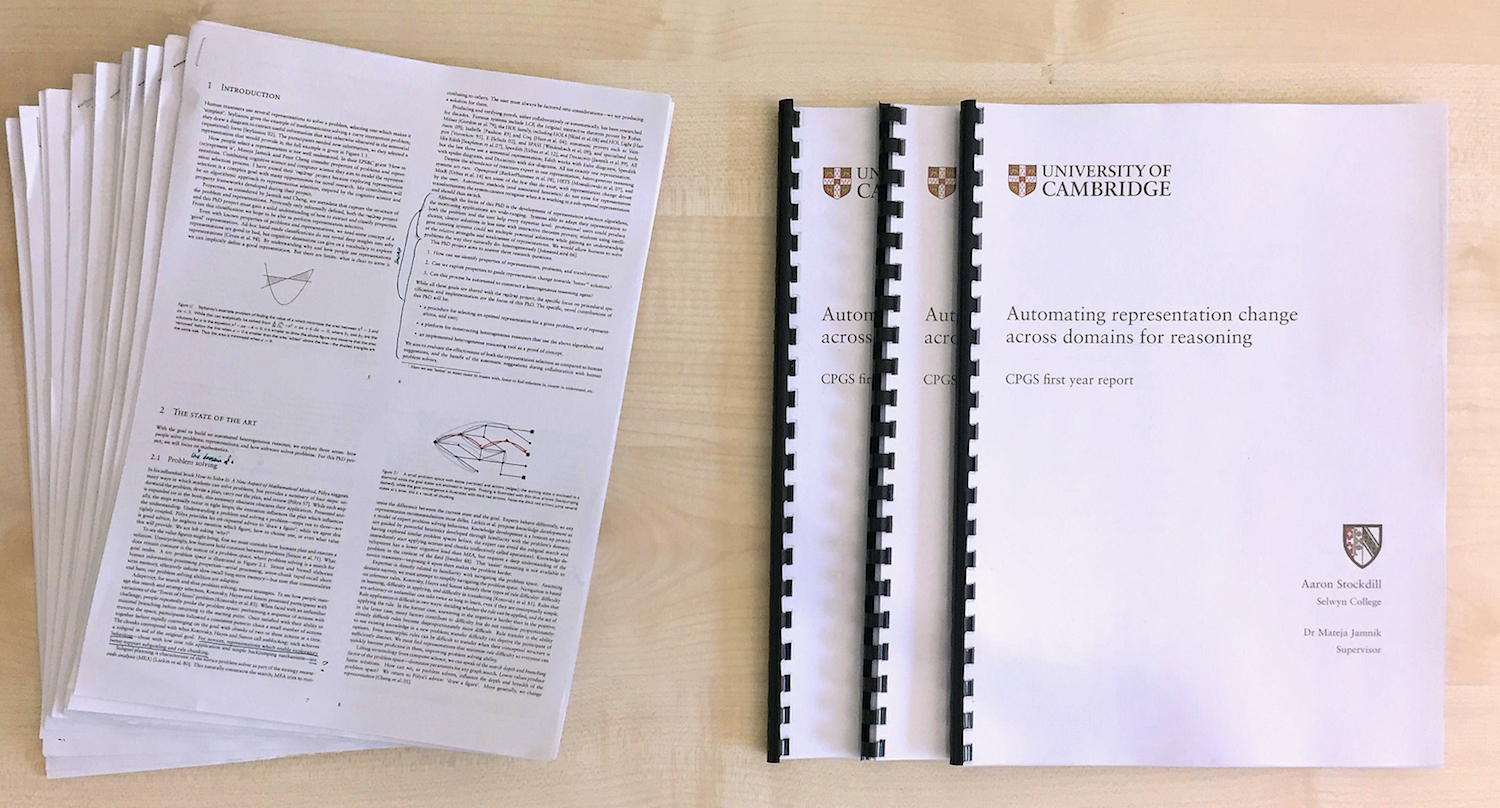Year One Done
 The drafts, and the final product.
The drafts, and the final product.
We are quickly approaching the start of a new academic year here in the northern hemisphere. In addition to shortly being in my second year, I will also be able to “officially” call myself a PhD student.
A first year report
The first-year report acts as a checkpoint at the end of the first year—surprisingly enough—to ensure that the student is making satisfactory progress. It is a short (under 10&thinps; words) report consisting of a literature survey, a summary of work completed to date, and a proposal for the remaining two years.
The literature survey is a time-consuming document to write, but is the foundation upon which the PhD is built. If you do not know the current state of the field, you cannot extend it. This is your chance to dive as broadly and deeply as you can. When you start reading, you read everything even tangentially related to your work. This gives you the lay of the land, the big picture. Then, you focus. Which work seemed most relevant? What did they cite, and who has cited them. Follow these paths, slowly getting more ruthless in what “relevant” means until you understand your field and—to the extent you can—your niche.
Viva voce
A PhD Student
Once you have passed the viva, a short(ish) administrative process takes place which “upgrades” the CPGS to being the first year of a PhD. So suddenly you go from not being a PhD student to having been one for a whole year.
The reasons for this are actually quite simple: the university don’t know you, you don’t know the university, and you may not know much about research either. By having a built-in trial period, there is a simple ‘escape hatch’ for both parties if things don’t seem to be working.